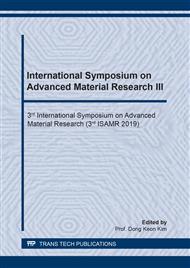p.118
p.124
p.129
p.137
p.142
p.149
p.157
p.165
p.171
Finite-Element Analysis of Preform Deformation for Flat Wall Thickness Distribution in the Injection Blow Molding Process
Abstract:
The wall thickness of plastic bottle is a major consideration for engineers in designing products with strength. For injection blow molding, the thickness depends on the preform size, and shape of the required product. The polyethylene terephthalate (PET) is injected in a mold with the shape of the preform. A stretch injection blow molding machine is used for processing the preform to the shape of the bottle. This research applied finite-element analysis for the process simulation; started from applying the air pressure inside the heated perform – until the PET expanded to the required bottle shape. While most studies were interested in axis-symmetry shape, this paper concentrated on a bottle with uniform flat wall thickness on four sides of a squared section bottle. Several finite-element models were studied and compared the simulation efficiency. Under the investigated area of ±15 mm x 90 mm, the thickness deviation found to be within 3.573%.
Info:
Periodical:
Pages:
142-148
Citation:
Online since:
April 2020
Authors:
Keywords:
Price:
Сopyright:
© 2020 Trans Tech Publications Ltd. All Rights Reserved
Share:
Citation:


